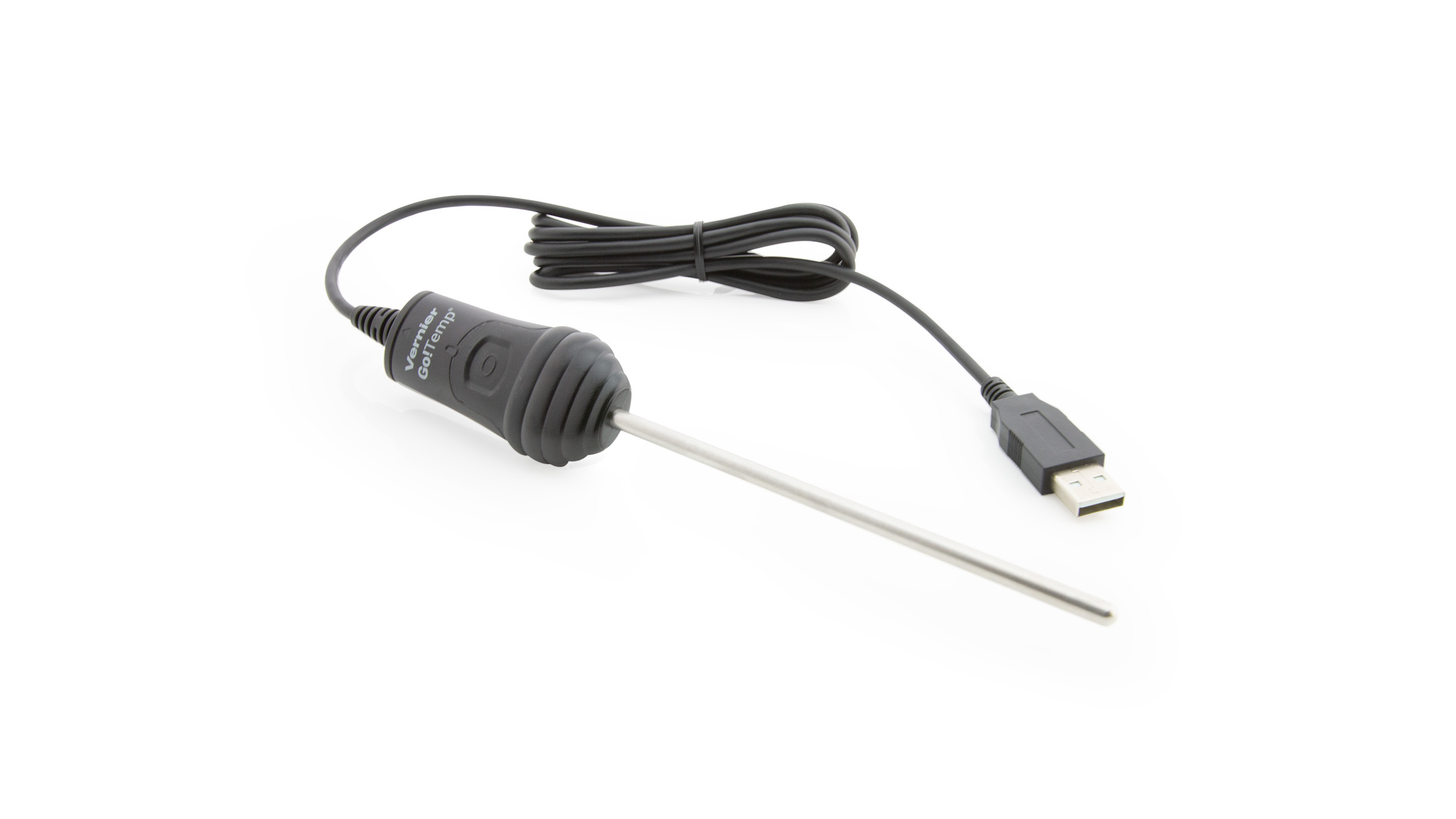Go!Temp (GO-TEMP )

Troubleshooting
- Primary Test: Plug in the sensor and run the data-collection program. Hold the tip of the sensor in your hand and check for the temperature readings to change.
- Secondary Test: Verify the LED on Go!Temp is green. If your LED is not green, see: The LED on my Go! device or LabQuest Mini is not green. What does that mean?
Additional Troubleshooting
- Do Go! devices work with the LabQuest App?
- Why is Logger Pro not connecting to the interface and reading "No Device Connected" in the toolbar?
- Go!Temp used to work, but now is not recognized by computer.
- Logger Lite does not detect any sensors.
- How do you calibrate a Go!Temp in Logger Pro?
- When collecting data on LabQuest at very slow data rates from Go! Devices, data collection ends before it should.
Specifications
- Range: –20°C to 115°C
- Maximum temperature that the sensor can tolerate without damage: 150°C
- Resolution: 0.07°C
- Accuracy: ± 0.5°C
- Response Time: 4s (to 90% of full reading in water)
Calibration
Calibrate? No. Go!Temp is very nicely calibrated when shipped. Most never need to calibrate. However, if you need to, you can do a one-point or two-point calibration. For more information on sensor calibration, see How do I calibrate my sensor?
Related Products
- Stainless Steel Temperature Probe (
TMP-BTA ) - EasyTemp (
EZ-TMP ) - Extra-Long Temperature Probe (
TPL-BTA ) - Surface Temperature Sensor (
STS-BTA ) - Wide-Range Temperature Probe (
WRT-BTA ) - Thermocouple (
TCA-BTA ) - Go Direct® Temperature Probe (
GDX-TMP )
